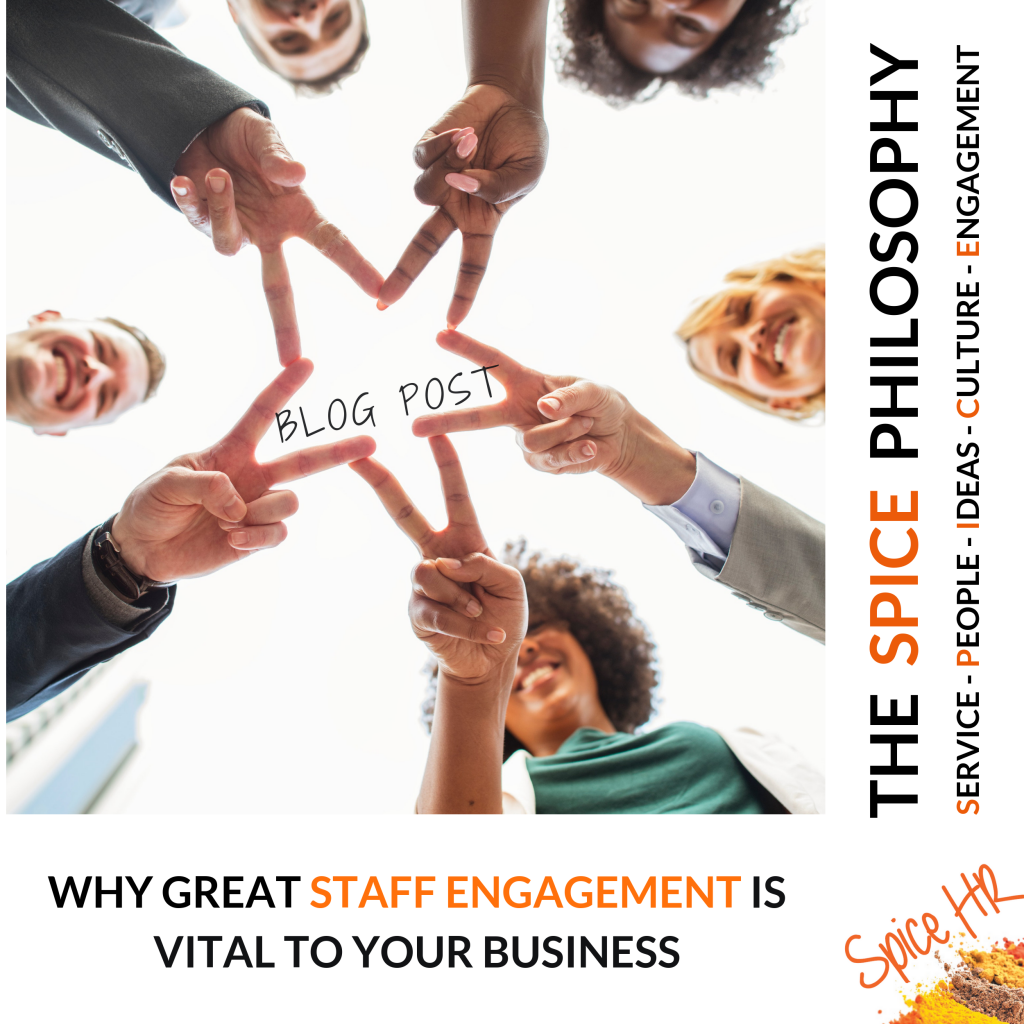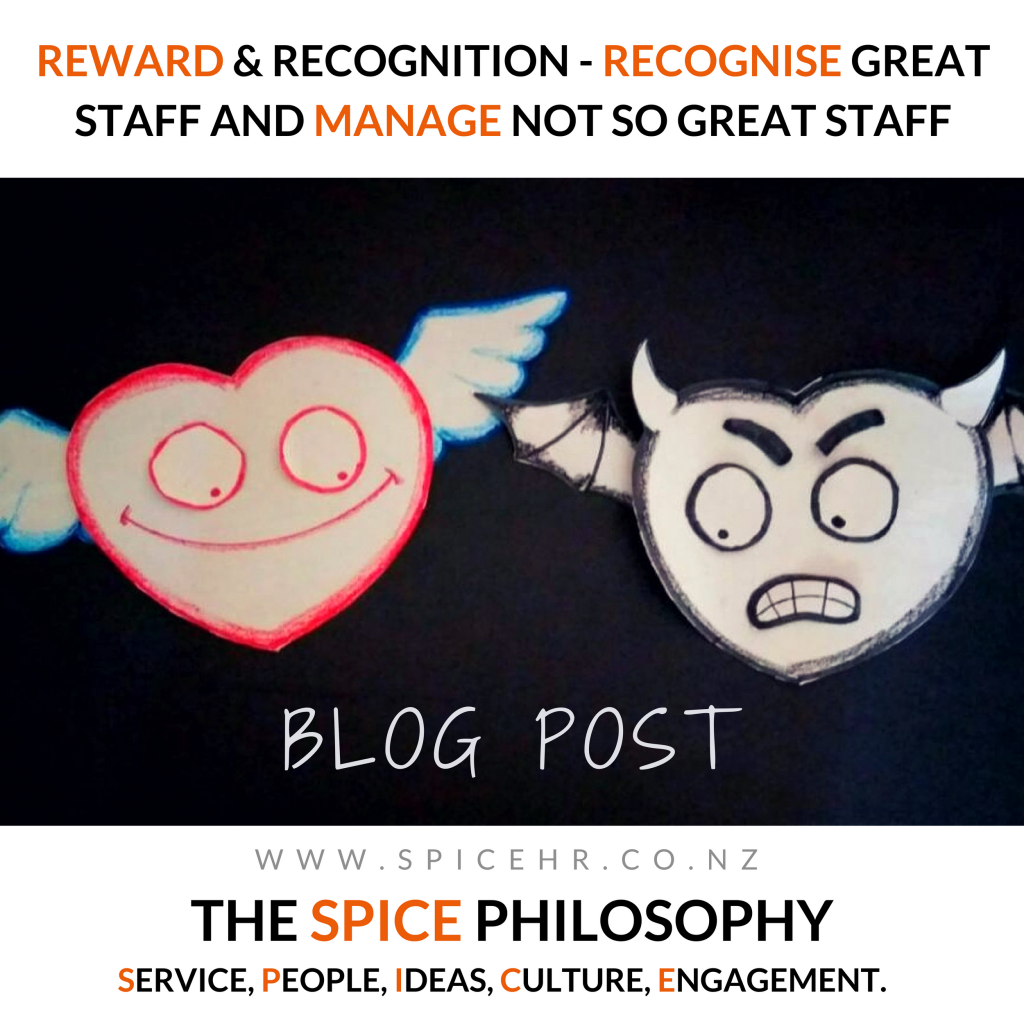 If you had the choice, would you rather eat a bowl of plain rice or a delicious, spice-filled curry?
If you had the choice, would you rather eat a bowl of plain rice or a delicious, spice-filled curry?
Sure, the plain rice would satisfy a need and ease your hunger pains, but that is all. The curry would not only satisfy those hunger pains, but also provide you with the added bonus of enjoyment and nutrition.
Why are we talking about curry?
Well, it displays the difference in attitude you can receive from your team. The plain rice team will show up to work for their pay, to tick the boxes and go home again. However, that spicy curry is the team that is engaged and invested in not only their own success but that of the company too.
They both technically get the job done. The plain rice team will be just fine. But to take your business to the next level, you need a bit of spice. And how do you get it?
Staff Engagement!
Staff engagement should not be considered a buzzword. It packs a powerful punch that can level up your business, and create a productive and happy work culture.
While the concept can seem overwhelming, in reality, staff engagement doesn’t have to be complicated or expensive. It often comes down to simple processes and gestures that you can weave into your workplace.
So, sit back and read on to find out why staff engagement is so important. We will also explain how you can boost it in your business.
What Does Staff Engagement Look Like?
Staff engagement is more than saying hello when your team walk in the door in the morning. It is about investing in your team so that they invest themselves in your business.
Engaged employees don’t just show up. They are focused, energised, and productive. They also tend to go above and beyond in their work, as well as in their attitude. They are invested in the success of the company.
More than merely being satisfied and happy at work, engaged staff are passionate about it.
Why Is It Important?
An employee who is invested will try harder, volunteer to take on more, work faster and be more creative. They are great ambassadors for your business, helping to lift customers and other team members with their hard work and positivity.
Employees who are just there for the money are more likely to jump ship. Give them a reason to stay that is less about money and more about purpose.
If you need more motivation, consider the fact that businesses who put effort into engaging employees can outperform those who don’t by up to 202 percent!
How to Encourage Staff Engagement
Great staff engagement does not happen by accident. You will have to put in some work to build the kind of culture you want.
Try some of these ideas…
- Make it a constant part of your culture from the top down.
- Clearly communicate your company’s vision and purpose with employees. Explain your “why” and connect them with the part they play in achieving it.
- Measure engagement regularly in a meaningful and authentic way (once a year surveys capture a moment in time, not an overall picture).
- Listen to your employees. Provide a safe, confidential feedback loop to hear their honest views.
- Support your team to grow and learn no matter what level they are at.
- Maintain an open and honest management style to inspire trust.
- Support work-life balance with flexible work schedules and encourage breaks and downtime to refresh.
- Get to know your employees as individuals, not just workers. Connecting with colleagues on a social level is one of the most significant aspects of creating engagement.
- Invest in building strong team relationships through social activities or team bonding exercises.
- Offer incentives and rewards for hard work, and cater them to the individual where possible.
- Acknowledge and celebrate success as a team.
- Hire the right people to fit with the culture of your business.
- Appreciate and celebrate your team, not only in their professional goals but personal as well.
- Make your workplace fun! Encourage laughter, and think of ways to help them blow off steam after a hard week.
Staff engagement is not just about a pool table and free coffee in the break room. More than an afterthought, it is something that should be a part of your company’s ethos and culture.
Modern workers are looking for meaning and purpose. Provide those things, and you will enjoy all the perks of a healthy, innovative and productive business.
Are you a bit stuck on how to instill this culture at your workplace? Then get in touch with us here at Spice HR. Encouraging great staff engagement is one of our specialties!





 Alright, we know we said those dreaded three words… Health and Safety. But those words and the policies that support them are a necessary evil at all workplaces regardless of the size or type of business. We can bet you have dotted your I’s and crossed your T’s by having processes in place for safe work practices. But have you considered the health and wellness of your team as part of those processes?
Alright, we know we said those dreaded three words… Health and Safety. But those words and the policies that support them are a necessary evil at all workplaces regardless of the size or type of business. We can bet you have dotted your I’s and crossed your T’s by having processes in place for safe work practices. But have you considered the health and wellness of your team as part of those processes?


